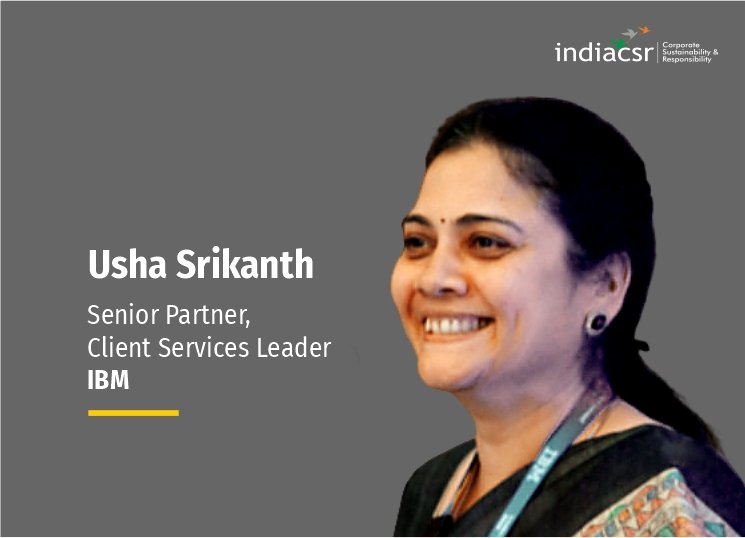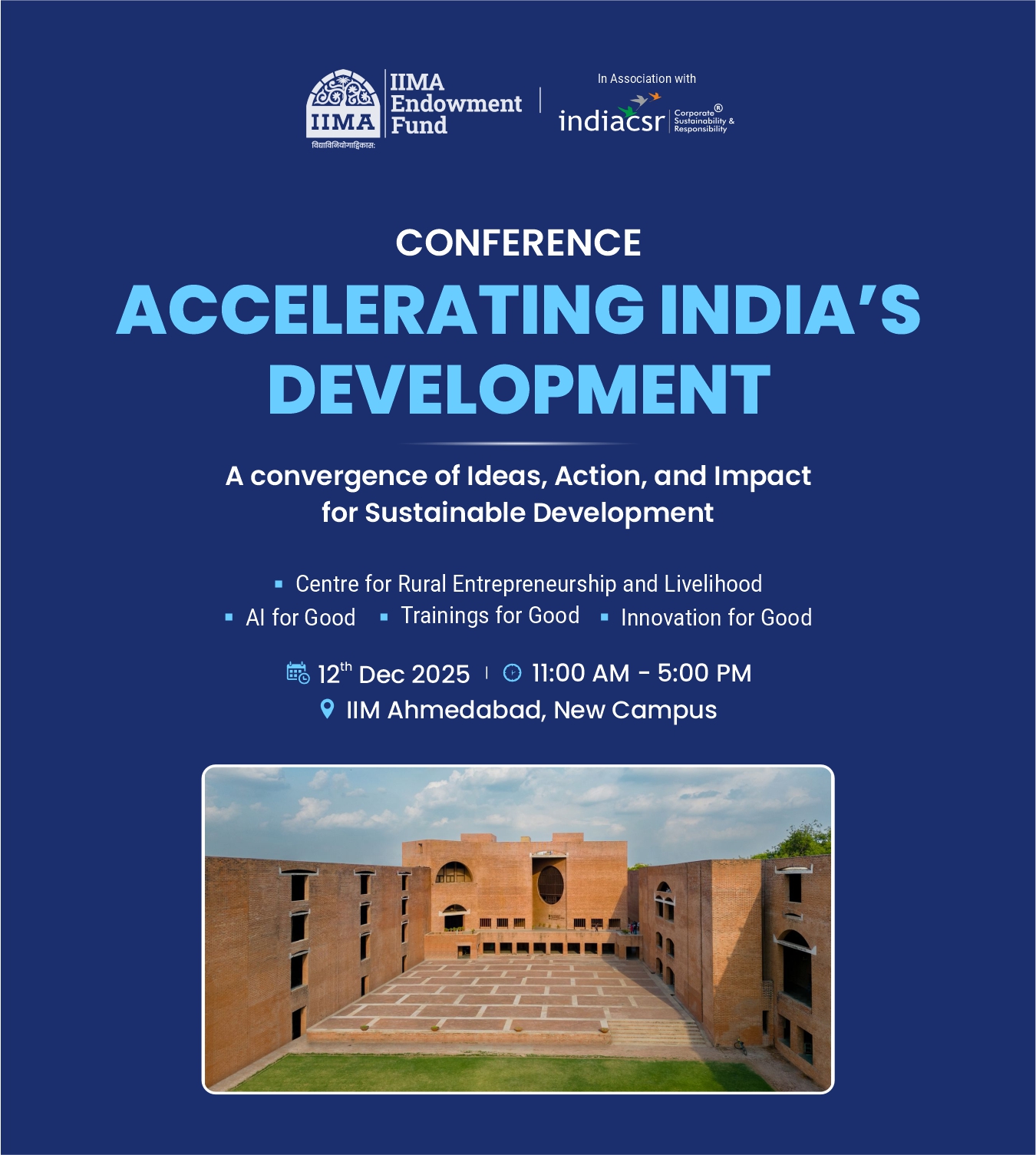By Rusen Kumar
In the area of programming and STEM (science, technology, engineering and mathematics), much work remains to be done to bring about gender equality. Programming and STEM continue to be a ‘man’s world’. Approximately 25% of programmers worldwide are women, a recent study indicates. In India, we don’t have data specific to programmers but when it comes to STEM only 14% of the STEM workforce is female, against a world average of 28.8%.
It is interesting to note the evolution in the space of programming from being a woman’s field to becoming a male-dominated vocation. STEM spearheads research, innovation, design and problem-solving. The time has come to apply a gender lens to innovation, research, and policymaking to make societies and economies more gender-equitable. Policies and strategies often assume that what works for men will also work for women.
Usha Srikanth, Senior Partner, Client Services Leader at IBM talked to Rusen Kumar, Editor of India CSR on India’s developing STEM culture. She realises that STEM Education among girls is taken up as an important social agenda in the country. Excerpts:
According to you what is the current scenario around STEM education among girls in India?
The demand for scientists and engineers from India continues to grow at an accelerated pace. There is a need not just to increase the overall STEM Workforce in the country but also to significantly increase the diversity representation in the workforce to keep pace with the exponential demand.
Given this context, STEM Education among girls is taken up as an important social agenda in the country. We see schools, colleges and universities strengthen their curriculum to promote critical thinking and scientific temperament in the students and are working on various models to enroll more girls. The Government is also taking up several steps in this direction. The combined drive between the Government and Educational Institutes is bound to accelerate the focus on STEM Education for girls.
While we have all these external drives it is key that girls get the required awareness, encouragement and family support to enroll for STEM Education in the Country. While in the urban areas this is happening, we have a long way to go in the semi urban and rural areas.
In India, when it comes to STEM only 14% of the STEM workforce is female, against a world average of 28.8%. What is the reason behind this disparity?
While India has accelerated adoption of STEM Education by girls, the same is yet to translate to the Workforce. The Societal stereotypes for Women still expect women to be the primary care giver @ home & STEM careers carry a perception of being high pressure and intense which discourages many Women from joining / continuing in the STEM Jobs.
Lesser number of Women in STEM workforce automatically means lesser role models which comes in the way of more Women adopting and growing in their STEM Careers.
Family pressures and lack of organizational support makes many women who enter STEM careers to drop midway to take care of their families and after a break they find it hard to get back and pursue.
The breaks contribute to further lowering of the numbers in the STEM Workforce.
To have an accelerated growth of Women pursuing and sustaining STEM careers we would need to drive more awareness within the Women Workforce to build their confidence, expand on role models in the society, get organizations to provide a level of flexibility and drive change in thinking overall across the society.
With more women dropping out of the workforce due to the pandemic, how critical it is for more women at work to complete education and pursuing STEM careers?
The pandemic has increased pressure on Women given the multitasking and balancing required between managing home, children and official work. The long hours and challenges associated had several women dropping out of the workforce in 2020. However, with this becoming the new normal, women have adapted themselves very well and many are finding a natural balance leveraging Work from Home as a flexibile option. This is a huge advantage and should encourage more women to drive to STEM careers. Additionally, the demand for STEM Workforce is steadily on the rise and it is right in terms of timing for more women to complete their STEM education and drive towards STEM careers.
Would like to share what is IBM doing in this area to support STEM education in India especially among girls?
Driving STEM Education for girls, creating more job opportunities and helping women sustain their STEM jobs is a very Strategic Focus for IBM. IBM has been driving “STEM for Girls” in government high schools. Over 1,47000 girls from 11 states in India are getting benefitted through this program.
Beyond education it is important to guide the girls in choosing the right career options. IBM volunteers are playing a key role here driving this
IBM believes in partnership to scale this agenda and currently we partner with Navodaya Samiti (NVS) to create a robust STEM ecosystem – essentially strengthening the Vigyan Jyoti programme running in 100 Jawahar Navodaya Vidyalayas (NVS). We also have 2 National Implementation Partners Quest Alliance and American India Foundation and 10 sub partners. Getting this ecosystem together we will make a big difference on STEM for Girls Agenda in the country
As a part of IBM, I am glad and proud to say that with all of the above we are working towards shaping up the future of our Country.
How can you we create an enabling ecosystem for girls to encourage and support them to explore careers in Science, Technology, Engineering and Mathematics (STEM)?
Success of STEM for girls is an end to end approach from education to employment. An enabling ecosystem goes a long way in driving the adoption and also accelerating this over some time. This requires bringing together a similar thinking and outcome approach around STEM for girls across educational institutions, community setting, the STEM candidates and their families (parents/guardians), counsellors and the corporates / institutions who employ them.
6. Gender equality is important from a business perspective and it should be made a business priority by companies. How do you think this can be achieved?
Gender equality is key for us to drive growth and expand on the available opportunities in the country. Few pointers to make this happen.
Driving this “top down” as a cultural shift with key senior leaders’ demonstrating by action.
Sensitizing the workforce to drive out “unconscious bias”.
Driving more opportunities and also enabling women to take the same across various levels.
Providing the required mentoring / coaching / guidance to help women succeed in the workplace.
In summary Making this a business priority and driving it requires a complete cultural shift by companies.
(India CSR)





